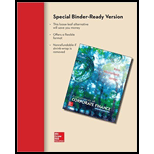
Fundamentals of Corporate Finance (Special Edition for Rutgers Business School)
11th Edition
ISBN: 9781308509853
Author: Ross, Westerfield, Jordan
Publisher: McGraw Hill
expand_more
expand_more
format_list_bulleted
Question
Chapter 2, Problem 9CRCT
Summary Introduction
To discuss: The possibility of having negative cash flow to stockholders’ and creditors.
Introduction:
Cash flow to the stockholders’ and creditors:
The cash flow to the stockholders’ and creditors of the company refers to the net payment made to the shareholders and creditors of the company.
Cash flow to the creditors:
It refers to the interest paid to the creditors minus the net fresh debt borrowed by the company.
Cash flow to the stockholders:
It refers to the dividend paid to the shareholders of the company minus the fresh equity raised by the company.
Expert Solution & Answer
Want to see the full answer?
Check out a sample textbook solution
Students have asked these similar questions
Need true answer.
Tutor please help!
Need ass
Chapter 2 Solutions
Fundamentals of Corporate Finance (Special Edition for Rutgers Business School)
Ch. 2.1 - Prob. 2.1ACQCh. 2.1 - What is liquidity? Why is it important?Ch. 2.1 - What do we mean by financial leverage?Ch. 2.1 - Explain the difference between accounting value...Ch. 2.2 - What is the income statement equation?Ch. 2.2 - Prob. 2.2BCQCh. 2.2 - Why is accounting income not the same as cash...Ch. 2.3 - What is the difference between a marginal and an...Ch. 2.3 - Do the wealthiest corporations receive a tax break...Ch. 2.4 - Prob. 2.4ACQ
Ch. 2.4 - Prob. 2.4BCQCh. 2.4 - Why is interest paid not a component of operating...Ch. 2 - What types of accounts are the most liquid?Ch. 2 - What is an example of a noncash expense?Ch. 2 - The marginal tax rate is the tax rate which...Ch. 2 - Prob. 2.4CTFCh. 2 - Prob. 1CRCTCh. 2 - Accounting and Cash flows [LO2] Why might the...Ch. 2 - Prob. 3CRCTCh. 2 - Operating Cash Flow [LO2] In comparing accounting...Ch. 2 - Prob. 5CRCTCh. 2 - Cash Flow from Assets [LO4] Suppose a companys...Ch. 2 - Prob. 7CRCTCh. 2 - Net Working Capital and Capital Spending [LO4]...Ch. 2 - Prob. 9CRCTCh. 2 - Prob. 10CRCTCh. 2 - Prob. 11CRCTCh. 2 - Earnings Management [LO2] Companies often try to...Ch. 2 - Building a Balance Sheet [LO1] KCCO, Inc., has...Ch. 2 - Building an Income Statement [LO1] Billys...Ch. 2 - Dividends and Retained Earnings [LO1] Suppose the...Ch. 2 - Prob. 4QPCh. 2 - Calculating Taxes [LO3] The Dyrdek Co. had 267,000...Ch. 2 - Prob. 6QPCh. 2 - Calculating OCF [LO4] Ridiculousness, Inc., has...Ch. 2 - Calculating Net Capital Spending [LO4] Bowyer...Ch. 2 - Calculating Additions to NWC [LO4] The 2014...Ch. 2 - Cash Flow to Creditors [LO4] The 2014 balance...Ch. 2 - Cash Flow to Stockholders [LO4] The 2014 balance...Ch. 2 - Prob. 12QPCh. 2 - Market Values and Book Values [LO1] Klingon...Ch. 2 - Prob. 14QPCh. 2 - Using Income Statements [LO1] Given the following...Ch. 2 - Preparing a Balance Sheet [LO1] Prepare a 2015...Ch. 2 - Prob. 17QPCh. 2 - Prob. 18QPCh. 2 - Net Income and OCF [LO2] During 2014, Raines...Ch. 2 - Prob. 20QPCh. 2 - Prob. 21QPCh. 2 - Calculating Cash Flows [LO4] Consider the...Ch. 2 - Net Fixed Assets and Depreciation [LO4] On the...Ch. 2 - Prob. 24QPCh. 2 - Use the following information for Taco Swell,...Ch. 2 - Use the following information for Taco Swell,...Ch. 2 - Prob. 1MCh. 2 - Prob. 2M
Knowledge Booster
Similar questions
arrow_back_ios
SEE MORE QUESTIONS
arrow_forward_ios
Recommended textbooks for you
- Principles of Accounting Volume 1AccountingISBN:9781947172685Author:OpenStaxPublisher:OpenStax College

Principles of Accounting Volume 1
Accounting
ISBN:9781947172685
Author:OpenStax
Publisher:OpenStax College
